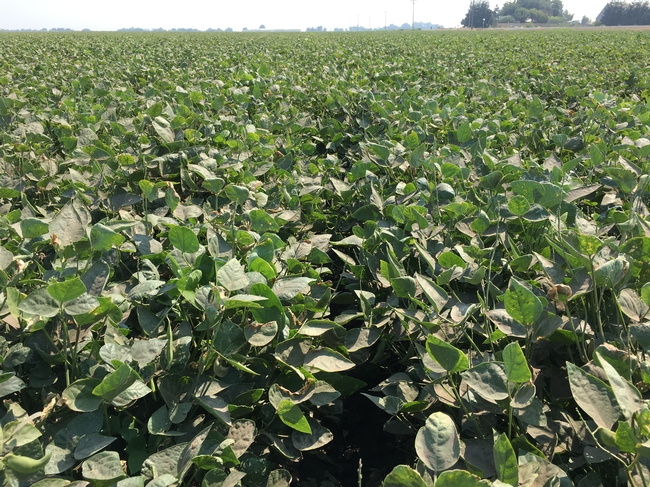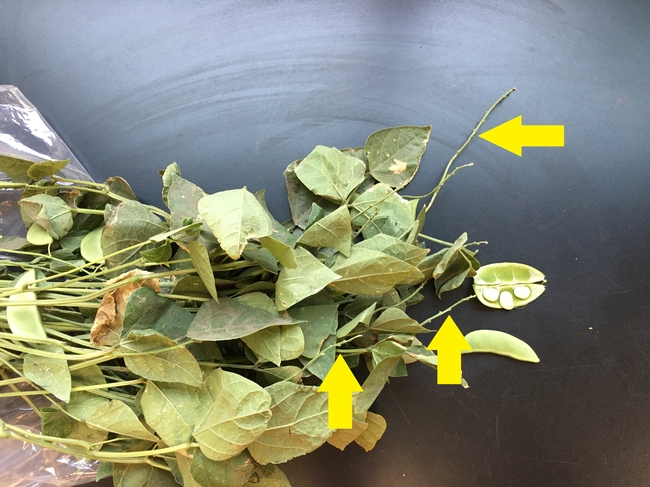Last week, I visited a baby lima field in the southwest part of San Joaquin County that had overall poor pod set. Pods were filling lower in the canopy, but flowers had not set higher on the plants. The field, which was planted in late-June/early-July had an excellent stand, and ostensibly, good fertility and moisture status (Figure 1). There were two possible reasons for the poor pod set that immediately came to mind: 1) lygus damage and 2) heat stress.

I checked data from the CIMIS stations nearest to this field, which are the Brentwood and Manteca stations. Between May 1st and August 31st, the Brentwood station recorded 16 days with a temperature over 100°F, and the Manteca station recorded 9 days over 100°F. Most notably, the heatwave in mid-August struck at perfectly wrong timing. This field was about 50 days after planting, which is generally the prime time for bean flowering. The heatwave brought daytime temperatures over 105°F and nighttime temperatures that barely, if at all, dropped below 70°F. In fact, it is the high nighttime temperatures that will impair pod development by hindering pollen movement and rendering it sterile. This is not just the case for limas; it can happen with other dry beans, as shown by Rachael Long in this blog post from a couple weeks ago. Had the heatwave occurred earlier in the summer, it could have caused a split set, which is not desirable. The mid-August timing, however, means that day length is now too short for further pod development, and yield will likely be lower than expected.
Naturally, one should ask what would be considered a ‘high' nighttime temperature? Rachael remembers having a conversation roughly 20 years ago with UC dry bean breeder of that time, Steve Temple, who said that nighttime temperatures above 68°F will cause poor pod set. This is corroborated by recent work out of the University of Delaware that indicates nighttime temperatures of roughly 70°F impairing pod set. CIMIS recorded nighttime temperatures in that range. The grower indicated that some nights stayed closer to 80°F, which is the temperature at which breeders screen varieties for heat tolerance.
So, what can a grower do during a heatwave? Obviously, we can't control the weather, but it's important to ensure that beans are not moisture-stressed at bloom, and especially not when bloom occurs during a heatwave. Check the top 12 to 24 inches of the soil profile, and irrigate if the soil is dry. If in doubt about how much water is needed, check the reference evapotranspiration (ETo) and irrigate to replace at least 120 percent of your daily ETo. Daily August ETo in the San Joaquin Valley ranges from 0.2 to 0.3 inches per day, so growers would want to apply 120 percent of that amount. In the field that I visited, the crop looked very healthy and non-stressed, so there is no clear suggestion for a management practice that could have saved the set during our recent heatwave.
For more information on lima bean production in California, please see the UC production manual.

